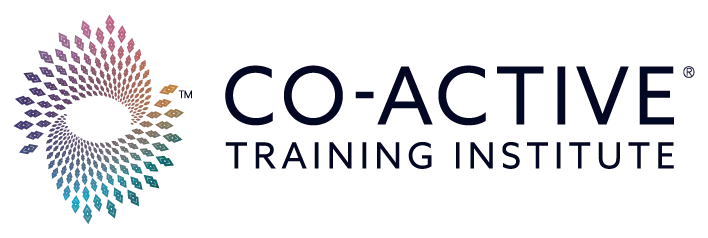If you work in HR or talent development, you are often the quiet architect behind a healthier, more human-centered workplace. You see the pressure organizations face to innovate, retain top talent, and demonstrate cultural competence—and you know leadership development is the lever that moves it all forward. But you also know it’s not just any form of leadership.
The future belongs to inclusive leaders. Because when leaders lead from deeper self-awareness and genuine connection, teams flourish, cultures shift, and organizations thrive. Ahead, we share some of the best strategies for developing inclusive leaders with Co-Active Training.
If you want to learn about other leadership strategies to implement in your organization, explore Co-Active Training.
Inclusion Is Not a Checkbox. It Is a Calling.
The workplace should not focus on transactions and top-down directives, as it is a living organism of relationships, emotions, and shared purpose. Despite recent cultural movements, inclusion is not an initiative to be executed but a culture to be cultivated. That is one way the Co-Active Training Institute stands apart. Rather than treating inclusion as a set of external practices, Co-Active approaches it as a deeply internal transformation—one that begins within the leader and radiates outward into teams, organizations, and communities.
According to Deloitte, 69% of executives rate diversity and inclusion as an important issue, yet only 38% believe their leaders lead inclusively. That gap is more than statistical. It is relational, cultural, and ultimately systemic.
This is where Co-Active Training enters with power and relevance. Co-Active does not train people to act inclusive. It equips them to be more inclusive from the inside out. In fact, to become more inclusive is a lived experience throughout.
Just as a tree must grow strong roots before it bears fruit, a leader must develop relational depth before they can lead inclusively. Through experiential practices, real-time feedback, and transformative coaching exercises, the Co-Active Leadership Model helps participants cultivate relational intelligence—an essential and often missing link in other leadership development programs.
This approach reimagines leadership as a shared responsibility, where individuals can contribute from various roles across a system. It highlights five core dimensions: Leader Within, Leader in Front, Leader Behind, Leader Beside, and Leader in the Field.
And it is inside the umbrella of relationship that the best strategies for developing inclusive leaders with Co-Active Training flourish.
Inclusion Through Relationship
How to develop inclusive leaders is a question of relationship, not technique. In the Co-Active Leadership Model, leadership is defined by one’s ability to influence through authentic connection.
Inclusive leadership stands rooted in clarity, illuminating the path for others to find their way. A Co-Active leader knows how to create this safe and affirming space—not just for the loudest voices in the room, but for every voice, including the quietest.
In a typical training module, participants explore leadership across five dimensions and are invited to access them all, including the Leader Within—a place of authenticity, purpose, and values. When someone leads from this center, their commitment to inclusion is personal, not performative.
What Sets Co-Active Training Apart?
There is no shortage of leadership training programs, but many fail to create lasting change. Why? Because they target behavior, not belief. Co-Active Training, by contrast, understands that transformation does not begin with what leaders do but with how they lead.
A McKinsey study found that companies in the top quartile for ethnic and cultural diversity outperform those in the bottom quartile by 36% in profitability. But data alone does not change hearts. That is the realm of deep coaching, personal challenge, and community accountability—all hallmarks of Co-Active Training.
Here are the best strategies for developing inclusive leaders with Co-Active Training:
1. Train for Relational Intelligence, Not Just Cultural Competence
Co-Active participants learn to recognize their biases, emotional patterns, and tendencies through an immersive program that prioritizes awareness. This sets the foundation for authentic inclusion, not just intellectual understanding.
2. Foster Five Dimensions of Leadership
Rather than reinforcing a single mode of leading, the Co-Active Leadership Model activates five distinct dimensions: listening, championing, creating, achieving, and collaborating. Each one opens the door to broader inclusion because inclusion thrives when all dimensions are welcomed and expressed.
3. Practice Real-Time Inclusion
The Co-Active training environment is a practice ground for inclusive behavior. Through coaching circles, partner exercises, and reflective feedback, participants are continually invited to attune to the unique individual in front of them which develops their ability to be more inclusive as a result. What happens during the program does not stay there—it transforms.
4. Expand Leadership Across the Organization
Co-Active Training supports an omnidirectional model of influence. Inclusive leadership does not live in the C-suite alone. The training equips all team members to show up as leaders, ensuring inclusion is not delegated but distributed.
5. Engage in Communities of Belonging
Alumni of Co-Active programs often speak of the enduring communities they build and maintain after the program. These are not superficial networks. They are active ecosystems of mutual support and accountability, helping leaders become more inclusive over the long haul.
6. Embrace Cross-Cultural Influences
The world-class Co-Active Faculty and student body are located around the world. The infusion of cultural influences in leadership and open discussion help to inform and broaden perspectives in a healthy and unique way.
Comparing Traditional vs. Co-Active Leadership Development
| Feature | Traditional Training | Co-Active Training |
| Focus | Skills and compliance | Relational intelligence and self-awareness |
| Format | Lecture-style, one-way delivery | Experiential, immersive, interactive |
| Outcome | Short-term behavioral change | Long-term personal and cultural transformation |
| Inclusion approach | External rules and checklists | Internalized awareness and practice |
| Participant engagement | Passive learning | Active ownership and leadership activation |
Addressing Skepticism: Is This Approach Too Emotional for Business?
Some people may wonder if the Co-Active focus on emotion and self-awareness fits in today’s results-oriented business world. The answer? It does more than fit—it excels. Research continues to show that emotional intelligence is a top predictor of leadership success. In fact, leaders who develop these qualities improve retention, engagement, and performance metrics across the board.
Co-Active Training adds depth to rigor. By blending proven coaching techniques with interpersonal development, Co-Active ensures that emotional insight becomes a strategic advantage.
Inclusion That Lasts Begins With Transformation That Sticks
Inclusion cannot be laminated on top of outdated leadership paradigms. It must be embedded into how people lead and relate. That requires calls for an internal shift.
The Co-Active approach helps leaders gain deeper self-awareness—not to draw attention to themselves, but to better understand their impact. With that clarity, they naturally lead in ways that are more inclusive and empowering for others.
Take the First Step Toward Inclusive Leadership
Co-Active Coach Training equips professionals to cultivate leaders across organizations. If you want to go beyond checklists and compliance with the best strategies for developing inclusive leaders, we are ready to come alongside you. Begin the journey of transformation throughout your organization: Explore Co-Active Coach Training.

